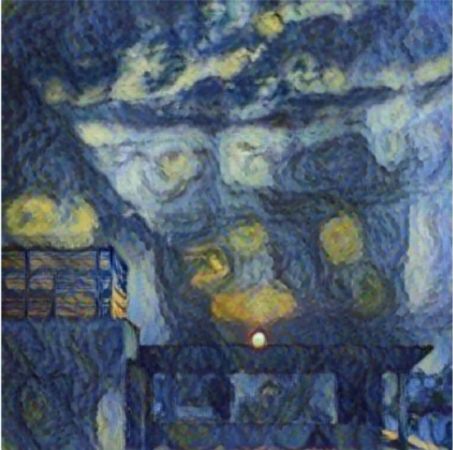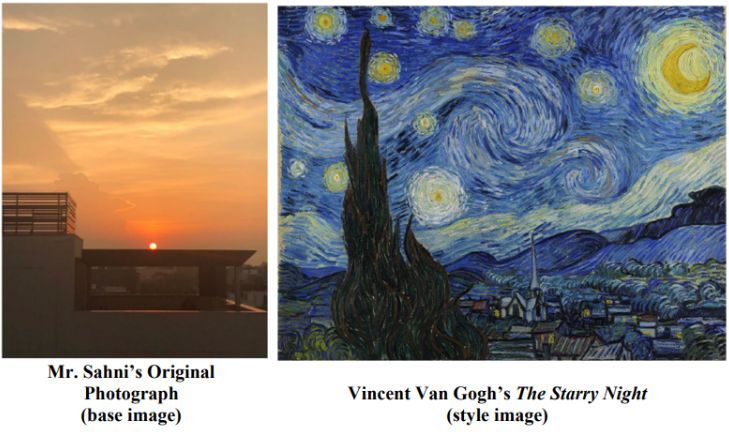On December 11, 2023, the U.S. Copyright Office continued its chain of rejections as it denied—for the second time—Mr. Ankit Sahni's request for a copyright registration in the work titled "SURYAST" (pictured below). As with previous generative AI cases, the Copyright Office's rejection is based on a lack of "human authorship" in the work. When the Copyright Office began weighing in on the copyrightability of AI art in early 2023, the lines drawn were incredibly blurry. They still are. However, each opinion from the Copyright Offices helps clarify those lines bit by bit.

In order to create SURYAST, Mr. Sahni started with a photograph he captured himself (pictured below). Then, he used the RAGHAV Artificial Intelligence Painting App ("RAGHAV") to modify the photograph into a painting in the style of Van Gogh's The Starry Night. Mr. Sahni modified parameters in RAGHAV to adjust the degree of stylistic transformation he desired. In his applications for copyright, he identified RAGHAV as a co-author of the work, but identified only himself as the copyright claimant.

Mr. Sahni argued to the Copyright Office that the decisions he made—providing the original work, selecting the desired style, and specifying the variable value to input into RAGHAV—were sufficient to make him the "author" of the work in its entirety. The Copyright Office disagreed, stating that the "expressive elements of pictorial authorship were not provided by Mr. Sahni." In other words, "the RAGHAV app, not Mr. Sahni, was responsible for determining how to interpolate the base and style images in accordance with the style transfer value." The Copyright Office emphasized the generative nature of the AI and how the AI model, as opposed to the user, "predict[s] stylizations for paintings and textures never previously observed", where such predictive labor was the driving contributor to the work—not Mr. Sahni's instructions.
In other words, one could infer from the Copyright Office's decision here that "human authorship" can't be met solely with direction and creative ideas. Rather, the actual expression of the creative idea, which is what copyright law is intended to protect, must be created by a human, and here, according to the Copyright Office, the expressive work was done by RAGHAV.
The full opinion can be read here: https://copyright.gov/rulings-filings/review-board/docs/SURYAST.pdf
This alert provides general coverage of its subject area. We provide it with the understanding that Frankfurt Kurnit Klein & Selz is not engaged herein in rendering legal advice, and shall not be liable for any damages resulting from any error, inaccuracy, or omission. Our attorneys practice law only in jurisdictions in which they are properly authorized to do so. We do not seek to represent clients in other jurisdictions.
We operate a free-to-view policy, asking only that you register in order to read all of our content. Please login or register to view the rest of this article.

